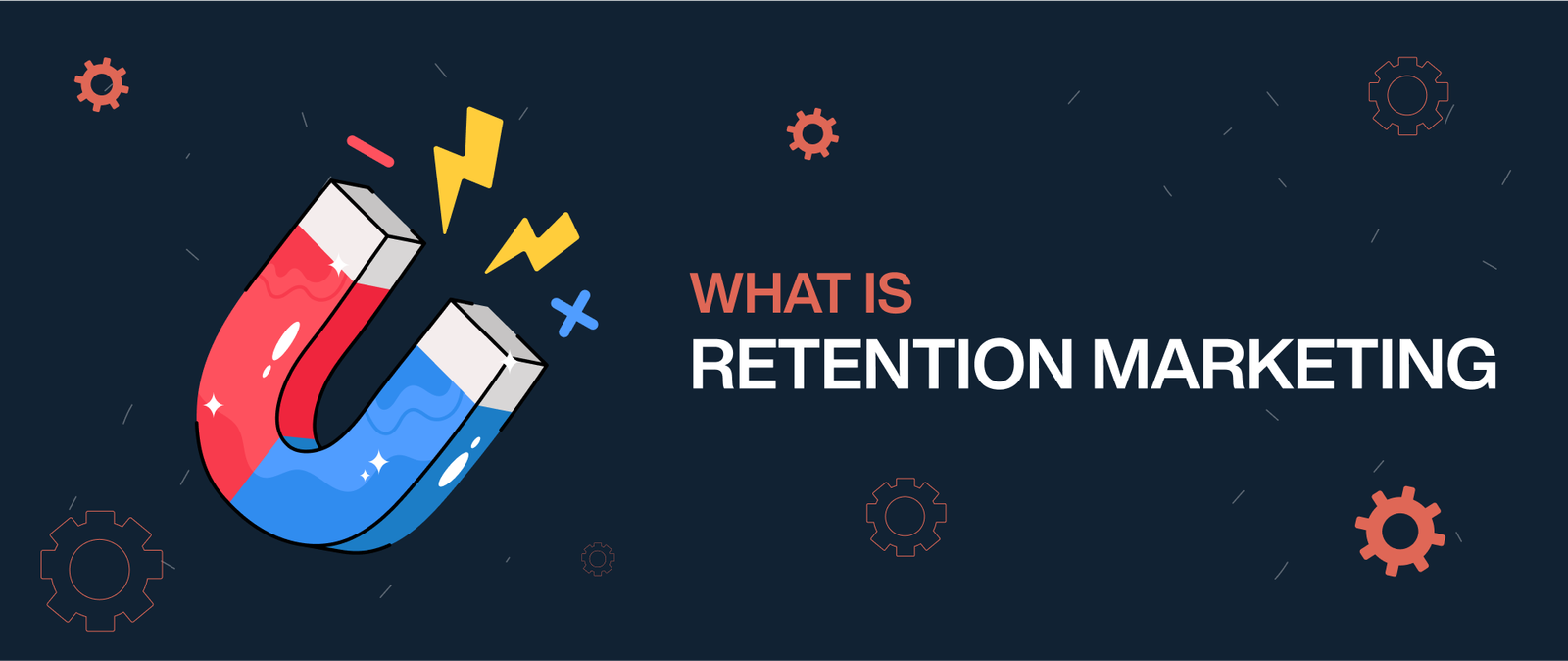What is Retention Marketing? A Complete Guide for E-commerce Brands

Introduction
Acquiring new customers is important, but keeping them is where real growth happens. For e-commerce brands, retention marketing is the strategy that maximizes customer lifetime value, boosts profitability, and strengthens loyalty. Unlike acquisition, which often requires heavy ad spend, retention marketing focuses on nurturing relationships with existing customers through channels like email marketing, SMS marketing, and personalized customer experiences.
In this guide, we will break down what retention marketing is, why it matters, and how e-commerce brands can build a winning retention strategy that drives consistent revenue growth.
What is Retention Marketing?
Retention marketing is the practice of engaging, re-engaging, and building long-term relationships with customers after their first purchase. Instead of chasing new buyers, the focus is on delivering ongoing value that encourages repeat purchases, higher order frequency, and brand advocacy.
For e-commerce businesses, this often involves a mix of email campaigns, SMS flows, loyalty programs, and personalized post-purchase experiences. When done right, retention marketing turns one-time buyers into loyal fans who keep coming back.
Why Retention Marketing Matters for E-commerce Brands
1. Higher Profit Margins
Studies show that acquiring a new customer can cost up to five times more than retaining an existing one. With customer acquisition costs (CAC) rising, retention marketing provides a more cost-effective way to grow revenue.
2. Increased Customer Lifetime Value (CLV)
Every additional purchase a customer makes improves their lifetime value. Retention marketing strategies like email and SMS marketing campaigns are proven to lift CLV by keeping your brand top-of-mind.
3. Sustainable Growth
Acquisition may deliver quick wins, but retention builds long-term stability. Brands that prioritize customer retention are less vulnerable to ad performance fluctuations or rising competition.
4. Stronger Brand Loyalty
Personalized retention strategies show customers that you care beyond the transaction. Over time, this builds loyalty, repeat purchases, and word-of-mouth referrals.
Key Retention Marketing Channels for E-commerce
Email Marketing
Email is the backbone of retention marketing. It allows brands to build automated flows like:
- Welcome series to onboard new customers.
- Post-purchase flows to encourage repeat buying.
- Win-back campaigns to re-engage inactive customers.
- Product recommendation emails to drive cross-sells and upsells.
Well-crafted email campaigns combine personalization, segmentation, and storytelling to strengthen relationships and boost revenue.
SMS Marketing
SMS is a high-engagement channel that complements email. It offers immediacy and higher open rates, making it ideal for:
- Sending exclusive promotions.
- Sharing shipping and delivery updates.
- Re-engaging customers with limited-time offers.
When integrated with email, SMS creates a powerful multi-channel retention strategy that meets customers where they are.
Loyalty and Rewards Programs
Incentivizing repeat purchases through loyalty points, referral bonuses, and exclusive perks gives customers a reason to stay engaged with your brand.
Customer Experience Optimization
Retention is not just about messaging. A seamless customer experience from fast shipping to easy returns and responsive support makes customers more likely to buy again.
Building a Retention Marketing Strategy
Step 1: Understand Your Customer Journey
Map out how customers interact with your brand before, during, and after purchase. Identify drop-off points and opportunities to re-engage.
Step 2: Segment Your Audience
Not all customers behave the same. Segment your audience based on purchase history, frequency, and engagement with email and SMS marketing campaigns. This allows you to send targeted messages that resonate.
Step 3: Automate Key Flows
Set up automation for welcome emails, abandoned cart reminders, post-purchase sequences, and win-back campaigns. These automated flows work in the background to generate consistent revenue.
Step 4: Personalize Every Interaction
Generic messaging does not work. Use customer data to personalize subject lines, recommendations, and offers. Customers are more likely to respond to tailored experiences.
Step 5: Measure and Optimize
Track KPIs such as repeat purchase rate, customer lifetime value, email engagement, and SMS response rates. Continuously optimize your strategy based on performance.
Common Mistakes to Avoid in Retention Marketing
- Over-relying on discounts instead of delivering genuine value.
- Neglecting list hygiene in email and SMS marketing, which harms deliverability.
- Failing to segment and sending the same messages to everyone.
- Ignoring customer experience, which can undo even the best retention campaigns.
The ROI of Retention Marketing
Retention marketing consistently delivers one of the highest ROIs in e-commerce. Brands that adopt strong retention strategies often see:
- 25-45% revenue attributed to email and SMS campaigns.
- Reduced customer churn.
- Higher engagement rates.
- A community of loyal customers who become long-term brand advocates.
Conclusion
Retention marketing is no longer optional for e-commerce brands. With rising acquisition costs and fierce competition, the real growth opportunity lies in building stronger relationships with your existing customers. By leveraging email marketing, SMS marketing, loyalty programs, and customer experience improvements, brands can drive sustainable revenue growth and create customers who stick around for the long term.
Retention marketing is not about pushing more sales. It is about building trust, delivering value, and turning one-time buyers into lifelong customers.